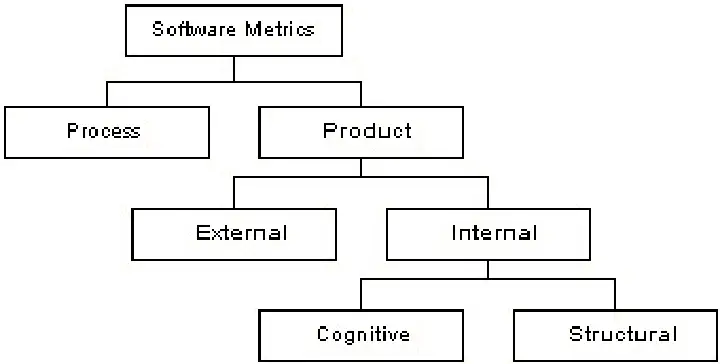What are Software Metrics?
Software metrics play a critical role in software engineering, providing a quantitative way to measure software attributes and properties. These measurements enable software engineers to assess the quality of the software being developed, track progress, and identify areas for improvement. Metrics can be used to evaluate many different aspects of software, such as size, complexity, performance, and maintainability. By using software metrics, development teams can make data-driven decisions to improve the software development process and ensure that the final product meets the desired quality standards.
Categorization of Software Metrics
Software metrics can be classified into two categories, each with its own distinct focus:
- Product Metrics: These metrics concern the various attributes of the software product itself, with two key characteristics being of particular importance: the size and complexity of the software, and its overall quality and reliability. It’s possible to calculate and evaluate these metrics at multiple stages of the software development life cycle.
- Process Metrics: Rather than assessing the software product, process metrics examine the characteristics of the software development process itself. This includes measuring factors such as the efficiency of fault detection, as well as analyzing the effectiveness of the various methods, techniques, and tools employed throughout the development process. By focusing on these metrics, it’s possible to evaluate and optimize the software development process for maximum efficiency and effectiveness.

Different Types of Metrics
Software metrics come in several different forms, each with its own specific focus:
- Internal Metrics: These metrics are used to measure properties of software that are of particular interest to developers. Examples include measurements of the software’s internal properties, such as lines of code (LOC).
- External Metrics: External metrics, in contrast, focus on the properties of software that are most important to end-users. This includes metrics related to usability, functionality, reliability, and portability, among others.
- Project Metrics: Project metrics are used by project managers to track the progress of a software development project. These metrics are based on past project data and provide estimates of time and cost. By comparing actual progress against these estimates, project managers can identify areas where costs, time, and effort can be reduced while also improving software quality. As software quality improves, the number of errors and the time and cost required to fix them are also reduced.
- Hybrid Metrics: Hybrid metrics combine elements of product, process, and resource metrics. One example is the cost per function point (FP), which combines the function point metric with cost estimation.
Software Metrics Advantages and Disadvantages
Advantages of Software Metrics
Software metrics have a number of potential benefits, including:
- Enabling the comparative study of various software design methodologies to help identify the most effective approaches.
- Providing insight into the complexity of software code, which can be helpful in deciding whether to divide a complex module further.
- Supporting the verification of compliance with software systems requirements and specifications.
- Providing a way to compare the capabilities and productivity of different people involved in software development.
- Assisting in the estimation of the effort required for the design and development of software systems.
- Providing feedback to software managers about the progress and quality of software development at various phases of the software development life cycle.
Disadvantages of Software Metrics
Although software metrics offer several potential benefits, there are also several challenges associated with their use, including:
- Difficulty and cost: The application of software metrics is not always easy and can be challenging and expensive.
- Verification: The verification and justification of software metrics are typically based on historical or empirical data, which may be difficult to verify or validate.
- Inaccurate estimates: Many predictive models used in software metrics rely on estimates of certain variables, which may not be known precisely and can lead to inaccurate results.
- Standardization: The definition and derivation of software metrics are often based on assumptions that are not standardized and may depend on the tools available and the working environment.
- Limited scope: While useful for managing software products, software metrics may not be the best approach for evaluating the performance of technical staff.
Hope your doubts regarding the Software Metrics in Software Engineering have got cleared with the help of this article. Make sure you are following us @ tutorials.freshersnow.com to not miss further updates on Software Engineering topics.
